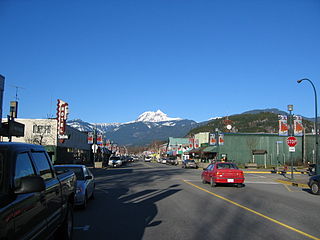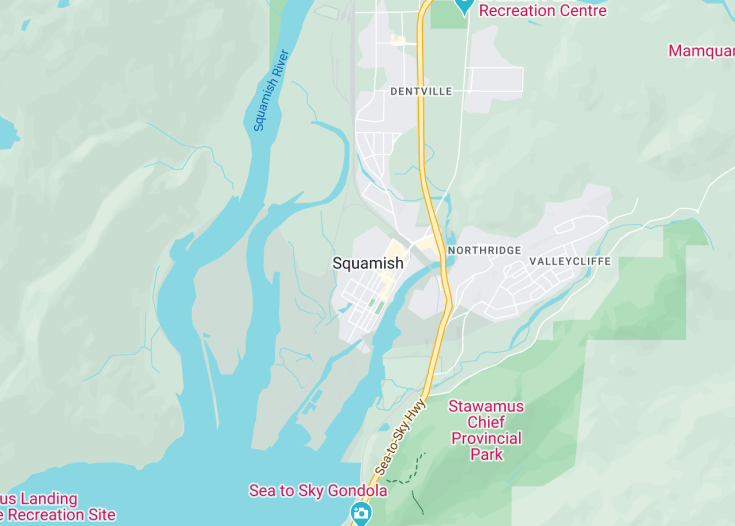Located between Vancouver and Whistler, Squamish, Canada is renowned for its breathtaking natural beauty and outdoor activities. Situated at the northern tip of the Howe Sound, it offers panoramic views and a majestic backdrop of the Stawamus Chief Mountain. Squamish is a haven for adventure enthusiasts, boasting world-class rock climbing, wind and kite surfing, hiking trails, and mountain biking. The community also nurtures a rich cultural scene, highlighted by the Squamish Valley Music Festival, making it an attractive destination not just for thrill-seekers but for everyone looking to immerse themselves in vibrant local culture and pristine natural surroundings.
When in Squamish, take the opportunity to explore the Sea to Sky Gondola for an unmatched view of the surrounding landscapes that encapsulate Canada’s rugged beauty.
For a unique Squamish experience, consider booking a guided ecological or cultural tour to gain a deeper appreciation of the indigenous Squamish Nation heritage and the area’s diverse ecosystems.
Top things to do & see in Squamish
Select the following sights and activities to discover best tickets and tours available in Squamish.
Squamish: Gateway to Outdoor Adventures
| Country | Canada |
| Time in Squamish | GMT-8 |
| Language spoken | English |
| Population | 19,893 (Statistics Canada, 2021) |
| Currency | Canadian Dollar (CAD $) |
| Airports |
|
Located halfway between Vancouver and Whistler along the scenic Sea to Sky Highway, Squamish is a vibrant community in British Columbia, Canada, known for its stunning natural beauty and outdoor recreation opportunities. A paradise for adventurers, Squamish offers a plethora of activities such as rock climbing, windsurfing, and mountain biking, attracting thrill-seekers from around the globe.
Historically, Squamish first gained significance as a habitat of the indigenous Squamish Nation, with its name derived from their language, symbolizing ‘Mother of Wind’. The town later evolved as a hub during the construction of the Pacific Great Eastern Railway in the early 20th century. Today, Squamish is not only a center for outdoor sports but also a growing community with a thriving art scene, various cultural festivals, and a bustling downtown that offers a range of dining and shopping experiences.
The Squamish culture is heavily influenced by its natural surroundings. The community places a strong emphasis on environmental conservation, demonstrated through various initiatives and the presence of the Squamish Environment Society. The spirit of the place is captured in annual events like the Squamish Wind Festival and the Test of Metal mountain bike race.
Further, Squamish serves as an important economic and transport node within the region, providing significant contributions through sectors like forestry, logistics, and increasingly, tourism. The recent developments in digital media and technology industries indicate a shift towards a more diverse economy.
Where is Squamish?
Squamish is strategically positioned in the heart of the stunning Sea to Sky Corridor of British Columbia, nestled between rugged mountains and fjords.
Distances:
| Route | Distance by car | Time by car |
|---|---|---|
| Vancouver to Squamish | 64 km | 1 hour |
| Whistler to Squamish | 58 km | 45 minutes |
| Victoria to Squamish | 200 km | 4 hours (includ Ferry) |
What is Squamish famous for?
Squamish is world-renowned as the ‘Outdoor Recreation Capital of Canada’, famous for its world-class climbing spots, stunning hiking trails, and vibrant community festivals.
History
Pre-Contact Period (Before 1792)
The area now known as Squamish has been inhabited for thousands of years by the Squamish Nation, an indigenous people of the Pacific Northwest. The land, rich in resources, supported a thriving culture centered around fishing, hunting, and gathering. The Squamish people lived in harmony with the land, developing a deep understanding of the ecosystem which supported their traditional way of life.
The Period of European Contact (1792-1880)
European exploration began in the late 18th century when British explorer Captain George Vancouver reached the area. The subsequent period was marked by increased contact with Europeans, which introduced new goods and ideas, while also bringing diseases and a new economic system that disrupted the traditional lifestyle of the Squamish Nation.
The Industrial Era (1880-1950)
By the late 19th century, the region witnessed significant changes with the establishment of the Pacific Great Eastern Railway, which connected the area to the wider British Columbia. This development led to the growth of forestry and mining industries. The town of Squamish was officially incorporated in 1912, serving as a crucial hub for these expanding industries and facilitating further population growth.
Modern Development (1950-Present)
In the latter half of the 20th century, Squamish transitioned from a primarily industrial economy to one focused on service and tourism. The natural beauty of the area, including the iconic Stawamus Chief Mountain, began to attract outdoor enthusiasts. Today, Squamish is renowned for its outdoor recreational opportunities, such as rock climbing, wind surfing, and hiking, contributing significantly to its local economy.
Visit Squamish
What to see and do in Squamish
Squamish offers a myriad of activities and sights that cater to both adventure seekers and those looking to enjoy its natural beauty. Here are some highlights:
- The Stawamus Chief: This massive cliff face is one of the largest granite monoliths in the world, offering several challenging climbing routes and hiking trails.
- Squamish Valley Music Festival: A major draw for music lovers, this festival features a variety of genres and attracts artists from around the globe.
- Sea to Sky Gondola: Provides breathtaking views of the surrounding mountains and waters of Howe Sound.
- Brackendale Eagles Provincial Park: Known for one of the world’s largest gatherings of bald eagles during their annual winter migration.
Discovering Squamish’s rich indigenous heritage at the Squamish Lil’wat Cultural Centre can also be a profound experience.
Festivals and Events in Squamish
Squamish hosts several exciting festivals and events throughout the year, each with its unique charm. The Squamish Valley Music Festival, held in summer, is one of the most popular, bringing in top-tier musicians and bands. Winter brings the Bald Eagle Count, an event that celebrates the largest congregation of bald eagles in North America. These events provide great moments for visitors to immerse themselves in the local culture and natural environment.
Best time to visit Squamish
The best time to visit Squamish is during the summer months from June to September when the weather is warmest and the days are longest. This period offers the ideal conditions for exploring the great outdoors and partaking in the numerous festivals the town hosts.
Is Squamish worth visiting?
Squamish is unquestionably worth visiting for anyone who appreciates nature, adventure, or cultural experiences. The combination of its stunning natural scenery, a broad array of outdoor activities, rich cultural heritage, and vibrant community events makes it a standout destination in British Columbia. Whether climbing the formidable Stawamus Chief or attending the spirited Squamish Valley Music Festival, there’s something in Squamish for every traveler.










